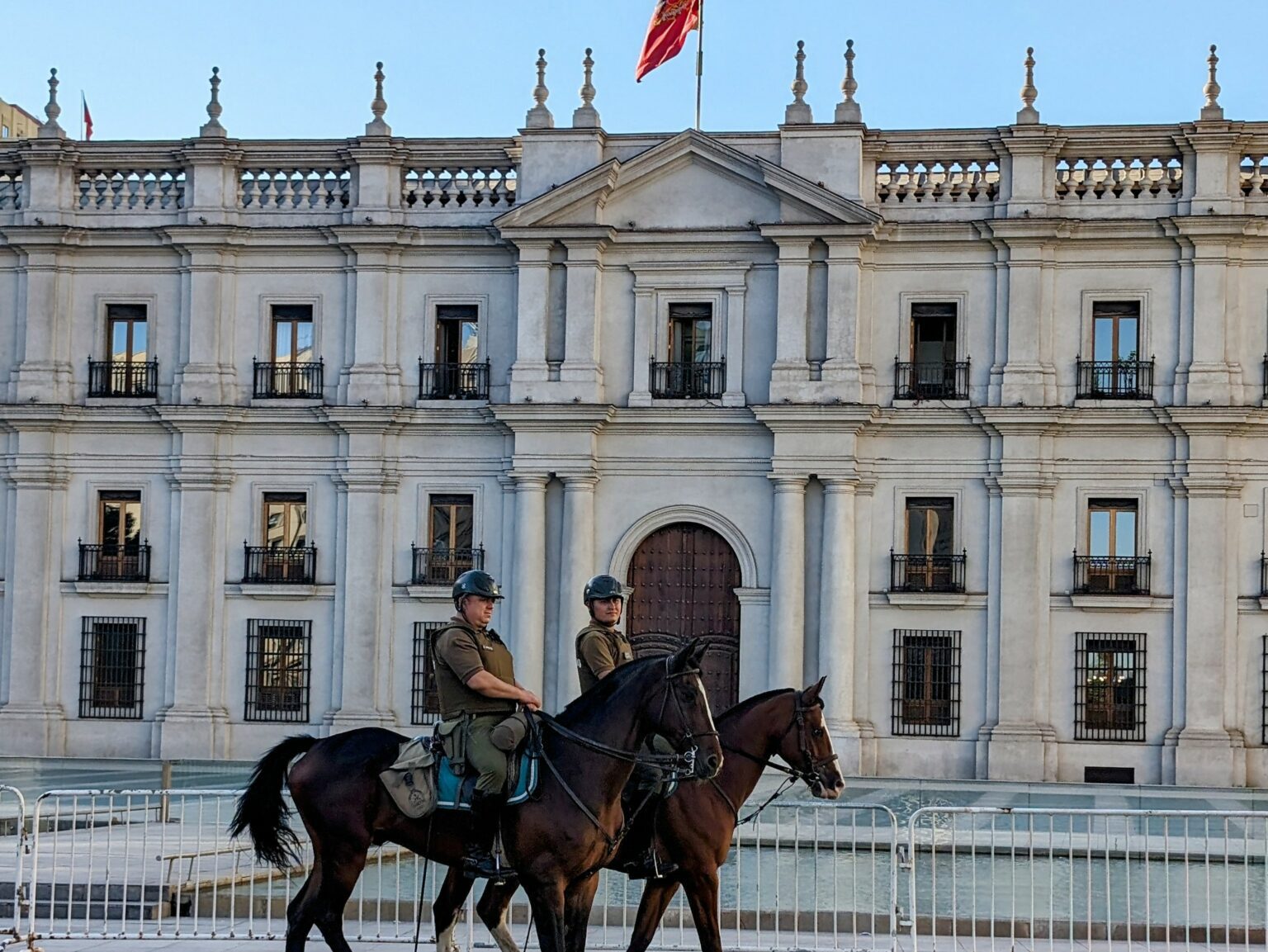Let’s talk about the top things to do when visiting Santiago, Chile. This is only the surface of what is available to you in the city. There are a number of museums and other activities that we did not have the chance to get to. We list these at the end of this itinerary and you can add them into the itinerary based on the amount of time that you have and your interests.
This article can help you determine where to stay when visiting Santiago, Chile, along with information about the weather, culture, and food.
Day 1: Learning About the History
I find it important to understand the context of the place you are visiting. The first thing I like to do when I get to a new city is do a walking tour or go to an important museum. In addition, these guides have good tips for other activities to explore in the city, foods to try, or neighborhoods to visit.
Free Walking Tour
There are a number of free walking tours available in Santiago, Chile and a quick Google search will show you your different options. They walk you through the city center and the historical areas of the city. (If you don’t go into the Cathedral at the Plaza de la Armas, it is something worth returning to). We used Free Tour Santiago and really enjoyed the tour. The guide had a great depth of knowledge. We would recommend this tour if the time works for your schedule. There are other tour companies that run their tours at different times of the day.
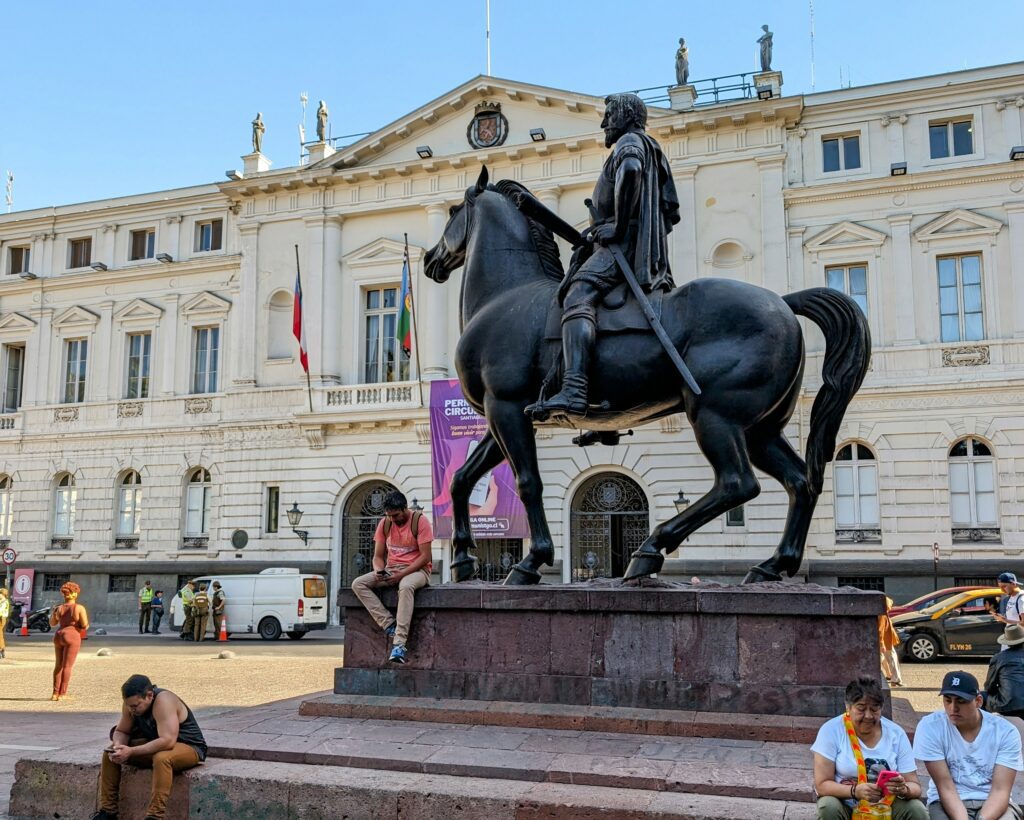
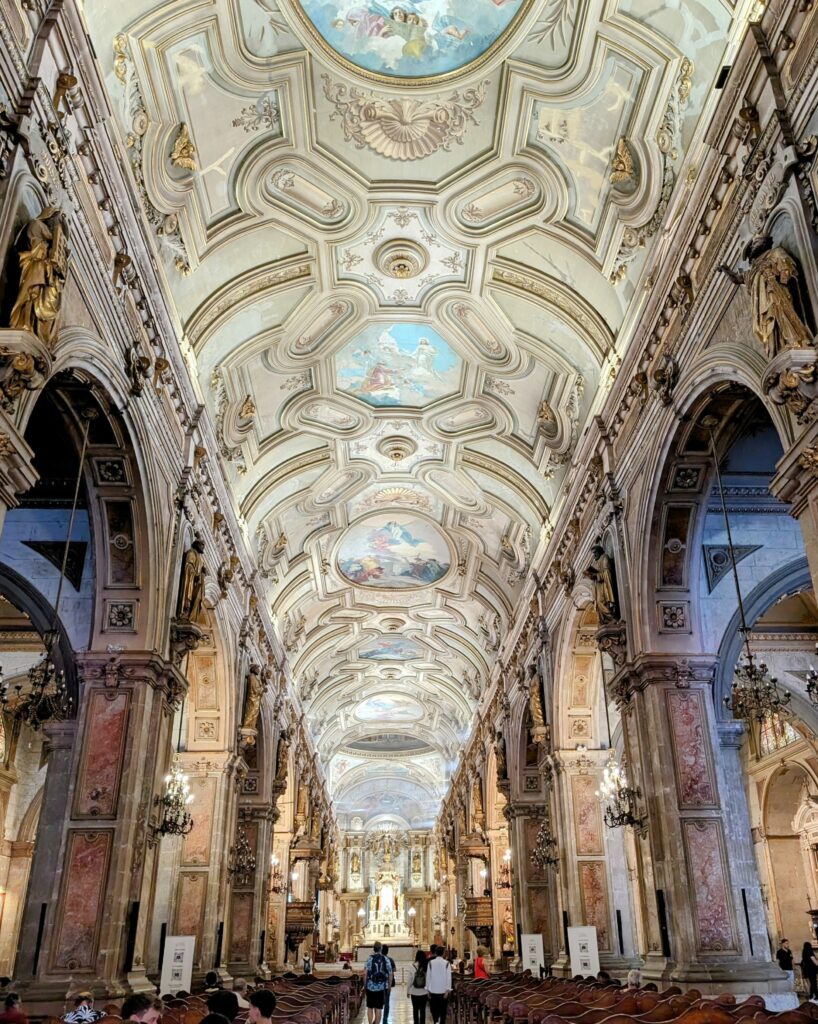
After your walking tour, get some lunch and make your way to the Museo de la Memoria to dive deeper into recent events that have truly shaped Chile today.
Museo de la Memoria
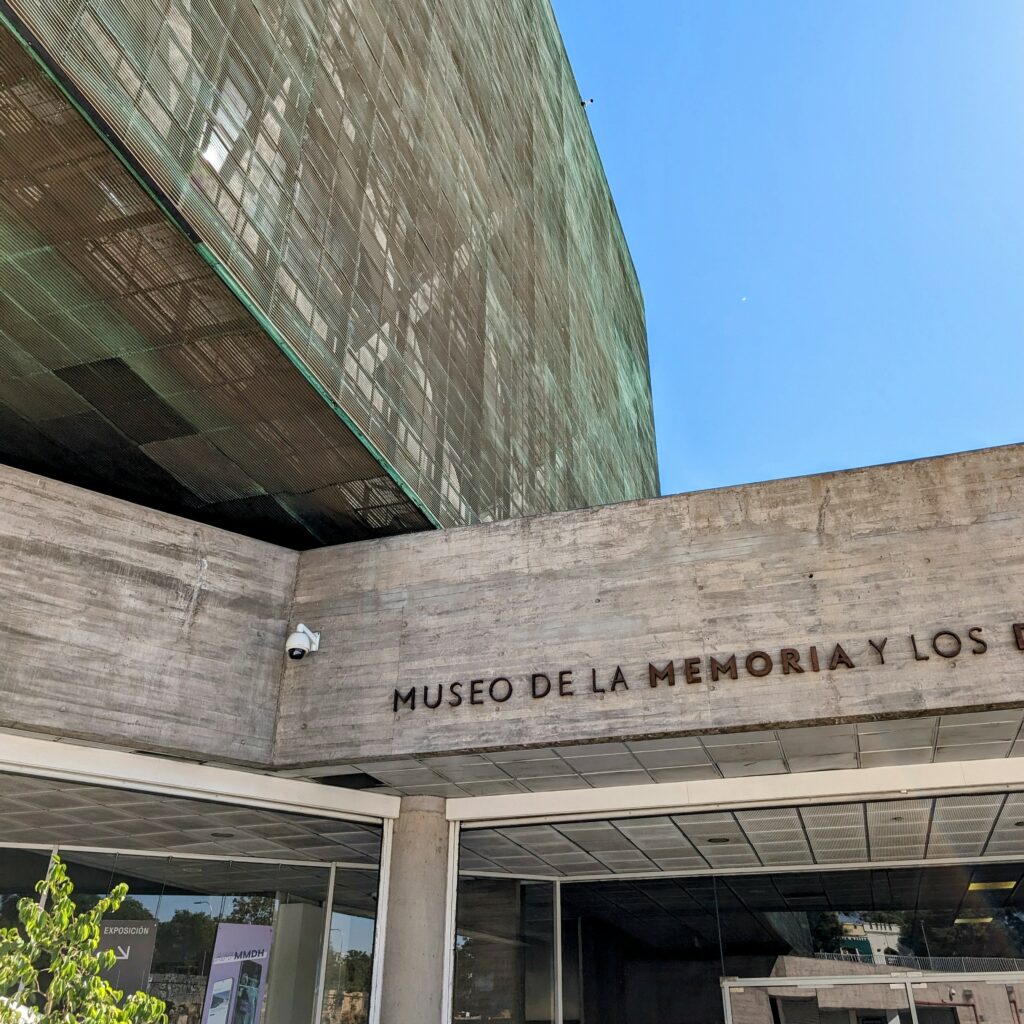
A big part of the history of Santiago, Chile is the military dictatorship that took over the government in a coup d’etat in 1973 and lasted until 1990. Pinochet’s military dictatorship kept control of the country with their manipulation of the media and the kidnapping and murder of people who showed any threat to the government’s power. The Museo de la Memoria is dedicated to educating visitors on the human rights violations of this government and maintaining the memory of all the people who were “disappeared” and were murdered during Pinochet’s reign. It is vital to hear about the history to prevent it from repeating itself in the future and understand the deeper characteristics of the current Chilean culture.
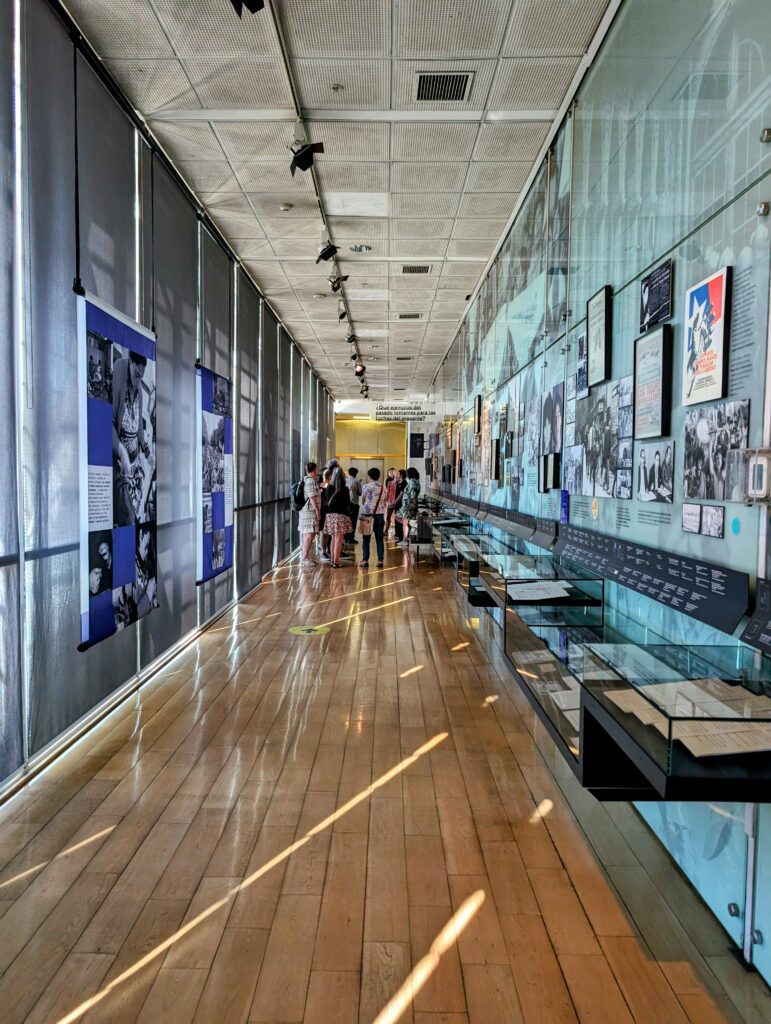
The museum is free to visit. With a donation, you can get an audio guide. I highly recommend getting the audio guide if you don’t speak Spanish proficiently because it will help you truly understand the history and the different exhibitions presented to you. You should give yourself at least 2 hours to truly take in the entire museum.
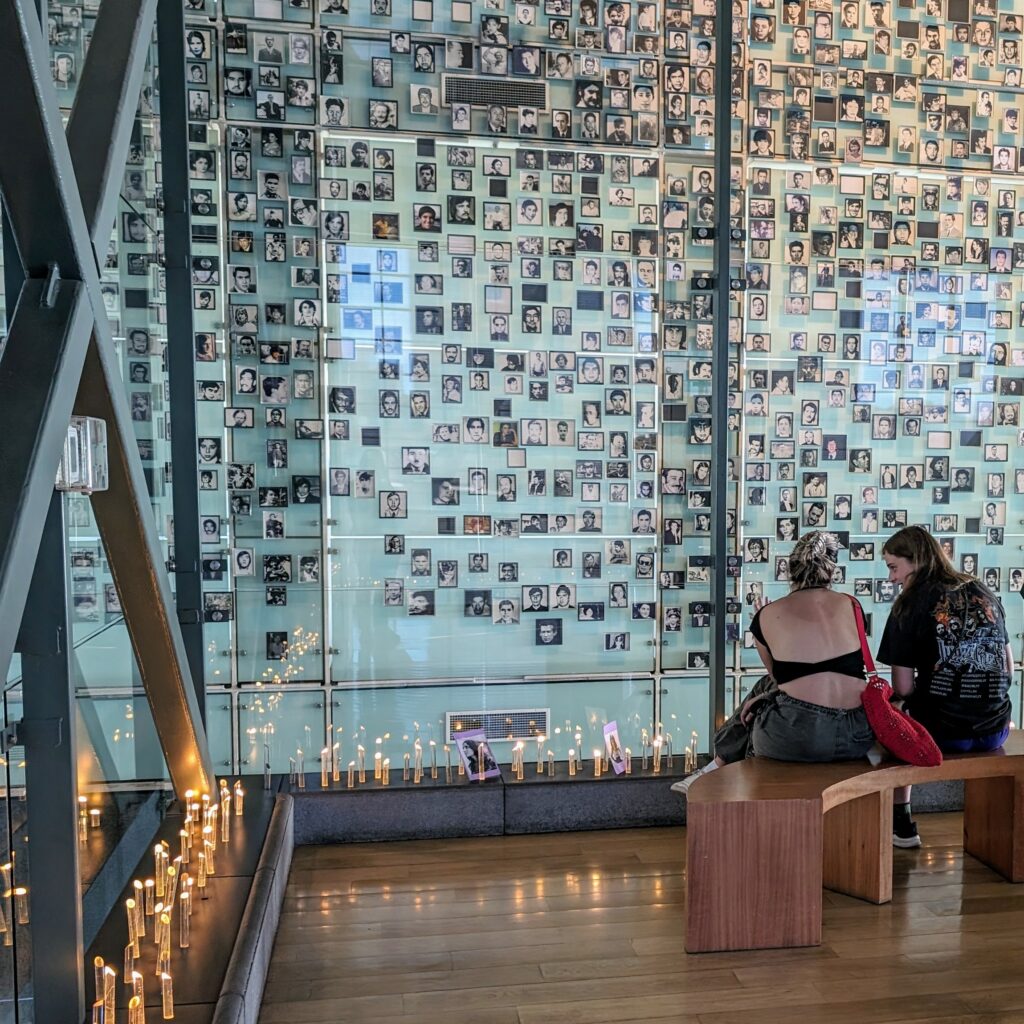
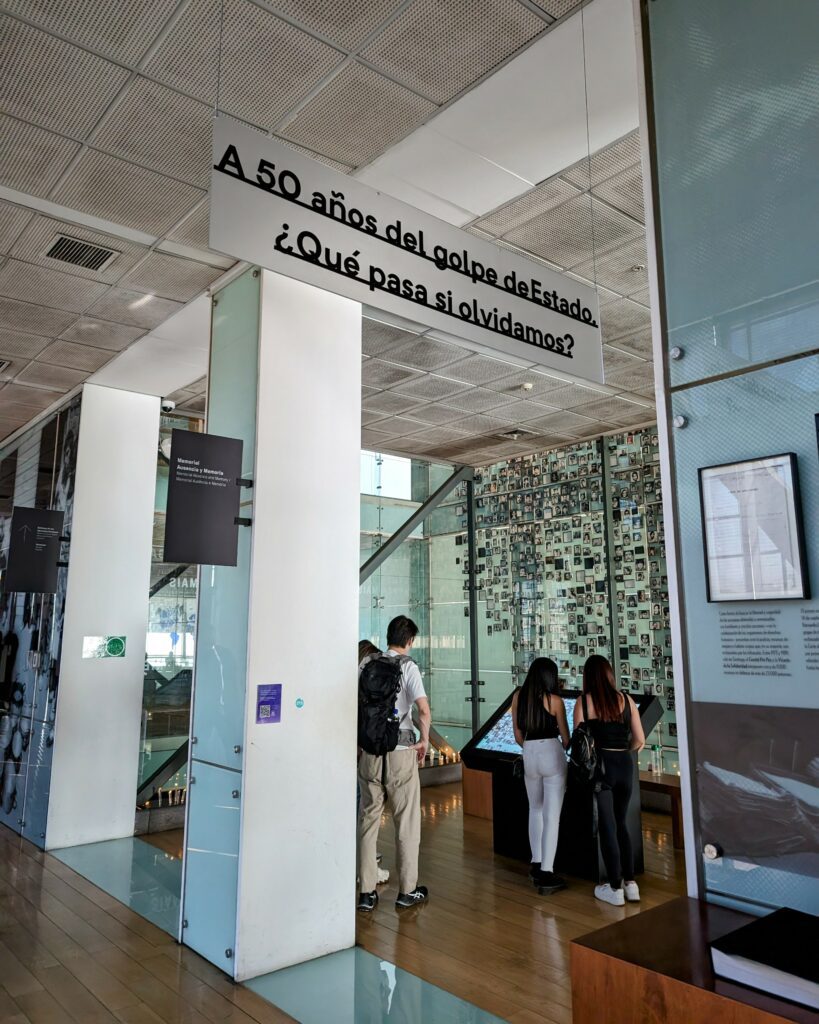
After this visit, find a place for dinner to decompress and get ready for another big day tomorrow.
Day 2: Seeing the Views
After exploring the older part of the city, it is time to discover the newer neighborhood of Santiago: Providencia. Part of this neighborhood is colloquially known as Sanhattan because it is the business center of Santiago, Chile and has a concentration of high-rises.
Cerro San Cristobal
Start the day going up to one of the key viewpoints of the city, Cerro San Cristobal. This particular experience includes roundtrips of both a funicular and cable car. By using both forms of transportation, you will get to go over the volcano hill of Santiago, Chile and get great views of the city.
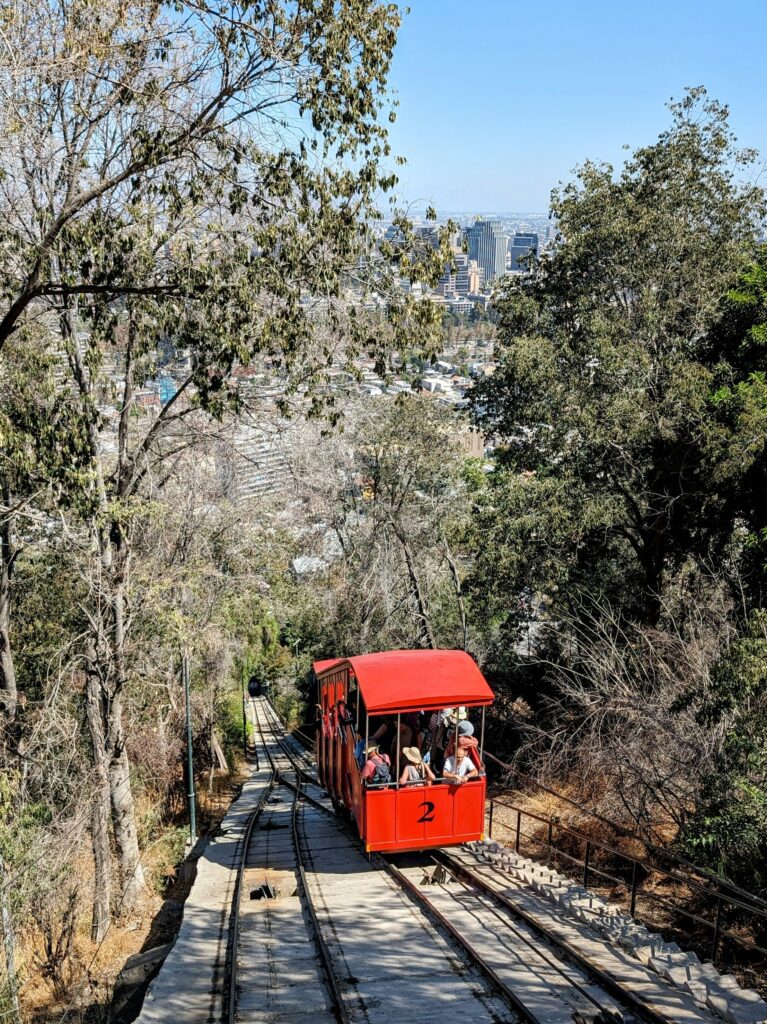
The funicular starts in Bellavista at Estación Pío Nono; it goes up the hill to the Sanctuary on San Cristóbal Hill. Here, you will get off and walk around this area to see a large statue of the Virgin Mary that watches over the city. From this hill, with great views of the city below, you can take the cable car to the Oasis Station, located near Barrio Providencia.
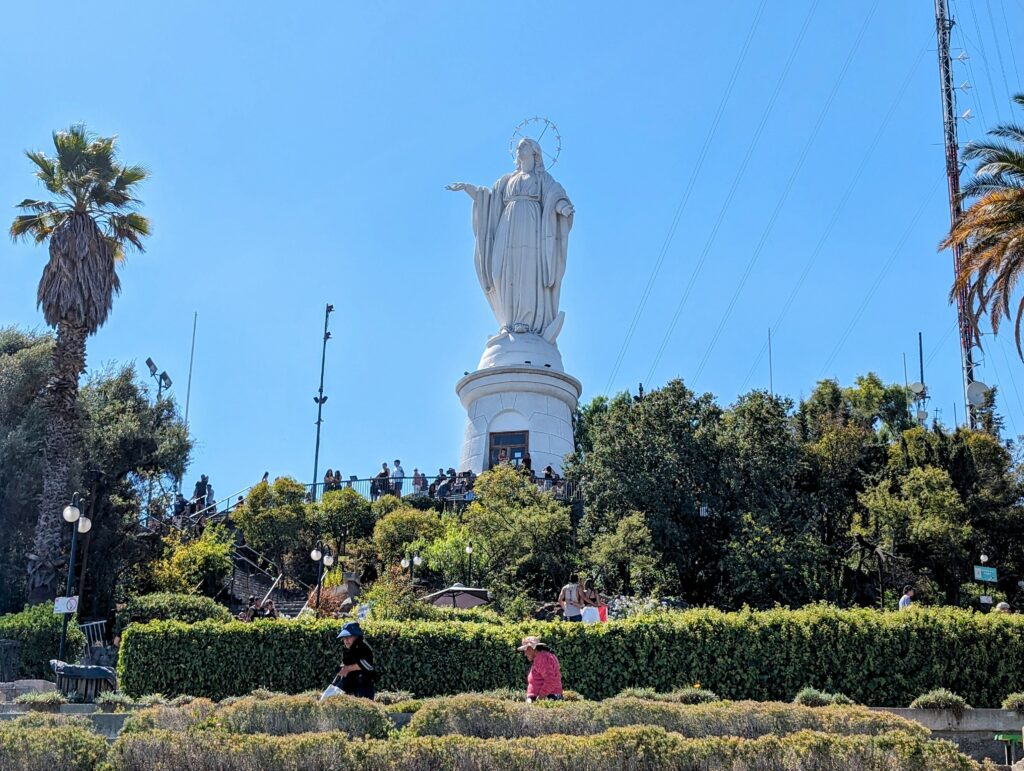
Now, you can explore the Providencia neighborhood. You have the option of purchasing a round-trip ticket, allowing you to take the cable-car and funicular back to Bellavista/Lastarria. Otherwise, you can purchase a one-way ticket to have as much time as possible in Provincia and get back to the Bellavista area later in the evening. Either way, you can purchase tickets in advance here. Purchasing tickets in advance will help you avoid the line.
Sky Costanera of the Gran Torre Costanera
The Providencia neighborhood is home to the tallest building in South America and has a sky deck on its top two floors with 360 views of the city and mountains and a cafe. The entrance into the tower is on the lower floor of the Costanera mall. You can purchase tickets in advance to go to the viewing deck here, which will allow you skip the ticket purchasing line and go straight through the metal detector and the top floors.
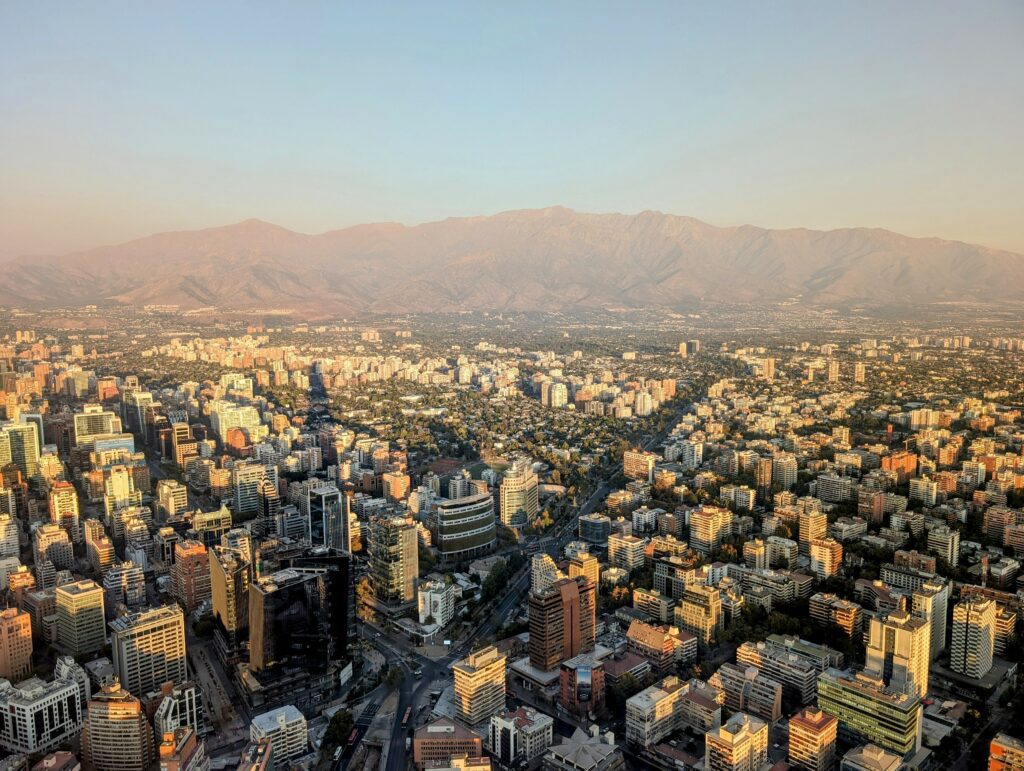
The views from the sky deck are truly remarkable. You can see the mountains that surround the city and the buildings spread throughout the valley. If you like sunsets, this is a popular spot to watch it. I would recommend going up an hour before the sunset because the lines can get long to get to the sky deck.
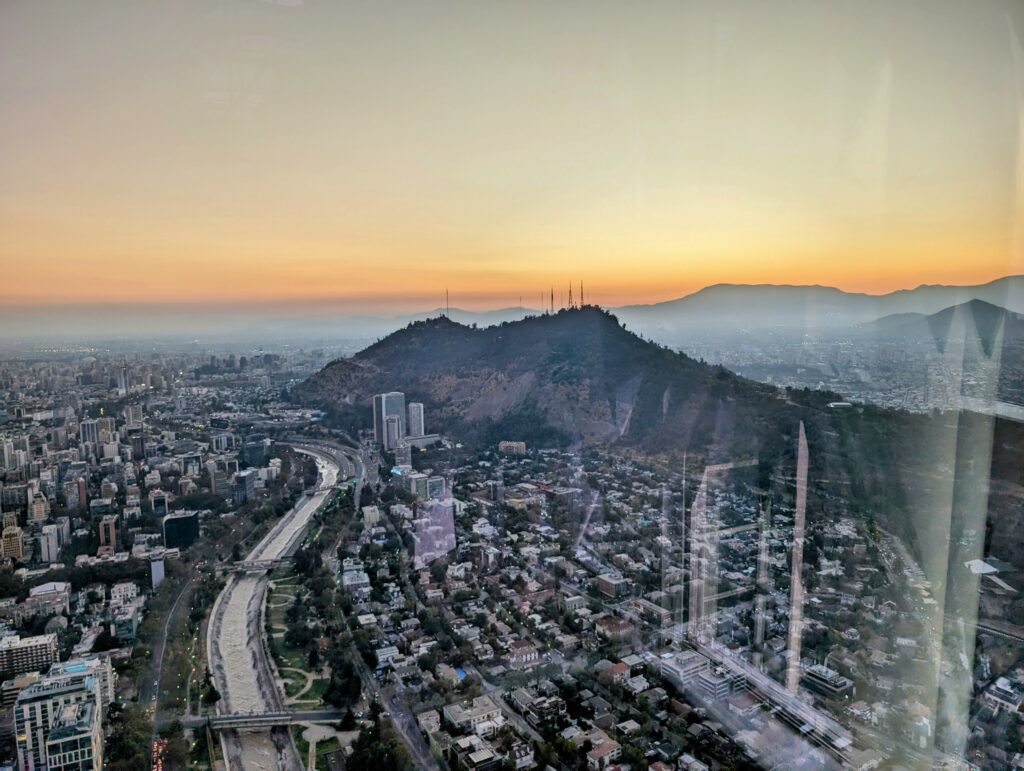
After the Gran Torre Costanera, you can walk around the Providencia neighborhood and find some local Chilean food (such as the mechada at Fuente Alemana). After, you can head back to the Bellavista/Lastarria area.
Day 3: Valparaiso Day Tour (Or Stay Overnight to Explore More)
Valparaiso is a port town just an hour away from Santiago, Chile. (It’s also where the Chile Congress is located while the rest of the national government is located in Santiago.) It is a large port in Chile and 30% of the country’s exports pass through here. In addition, it is known as the “Jewel of the Pacific” and is recognizable for the colorful buildings built up into the mountains around the port.
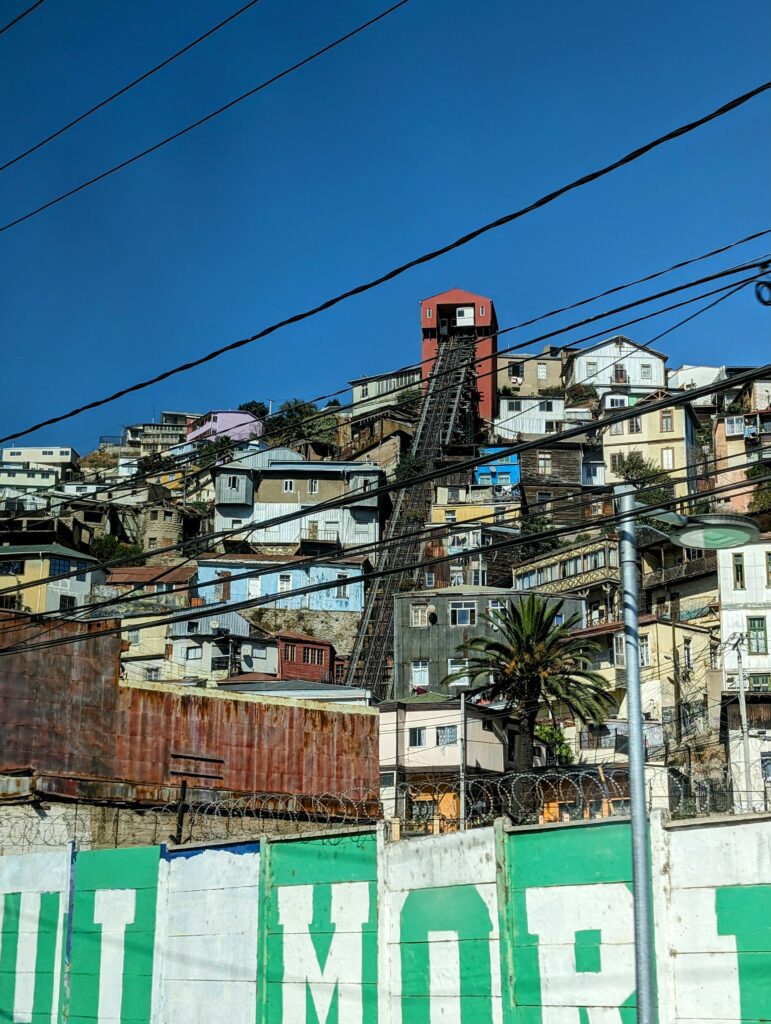
This city deserves at least a day to visit and explore its streets and culture. You can do that through a tour group or on your own. The nice thing about the tour group is that the logistics are taken care of for you. They will pick you up from your hotel, drive you through the city, take you to Vina del Mar (a high-end town with a beautiful beach in the area), and drop you back off at your hotel. While there are some tours that are quite affordable, it is important to note that, here, money can buy you a better experience. If learning about this city and its culture is a high priority for your experience in Chile, I would opt for spending a bit more on a tour.
Pablo Neruda, a famous Chilean poet, loved Valparaiso and lived in the city. There are tours that are specific to him and his love of the city that you can pursue as well.
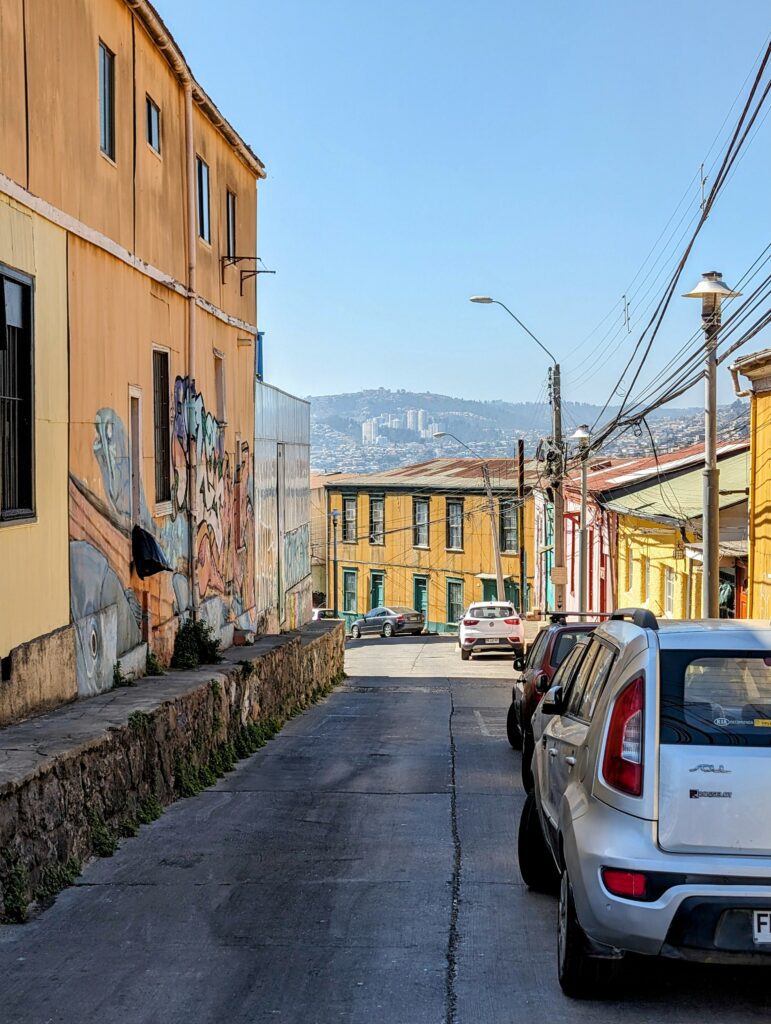
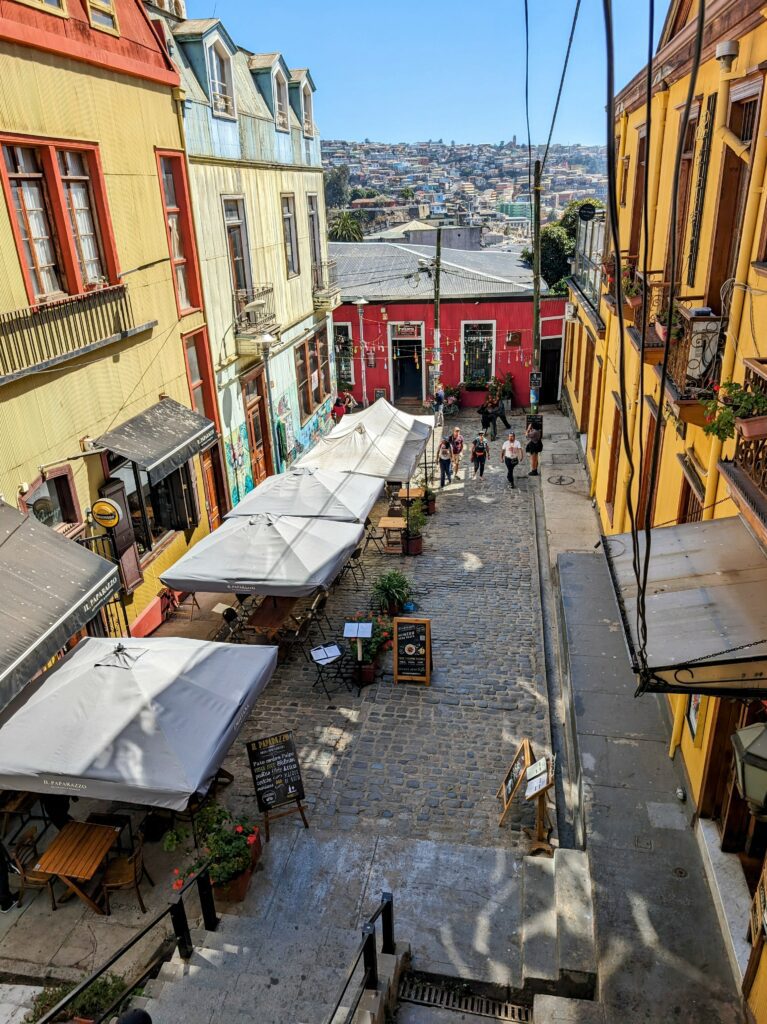
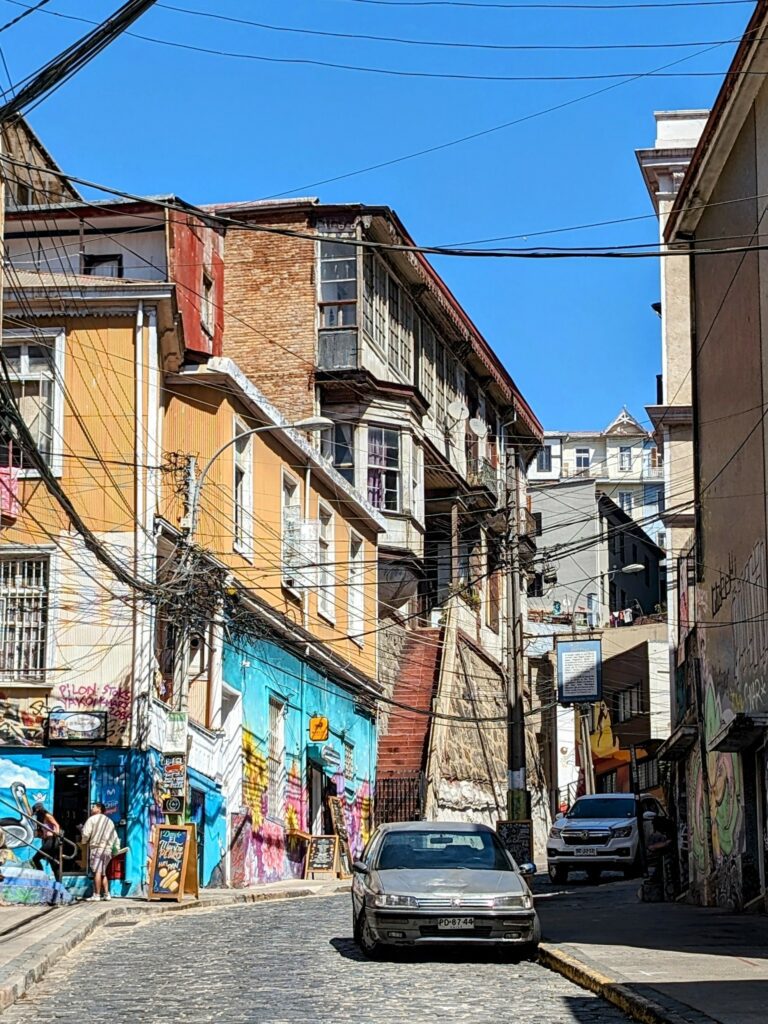
If you are comfortable with figuring out the logistics of transportation between Santiago and Valparaiso, I would recommend taking a public bus to Valparaiso in the morning (you can read more about transportation through Santiago, Chile here) and joining one of the free walking tours that is offered in the city. These tours often dive deep into the history and culture of a locale and it is worth exploring Valparaiso in this way. The comprehensive tours from Santiago may not be able to give you the full perspective needed to appreciate the city. You can also take a bus to Vina del Mar and then back to Santiago.
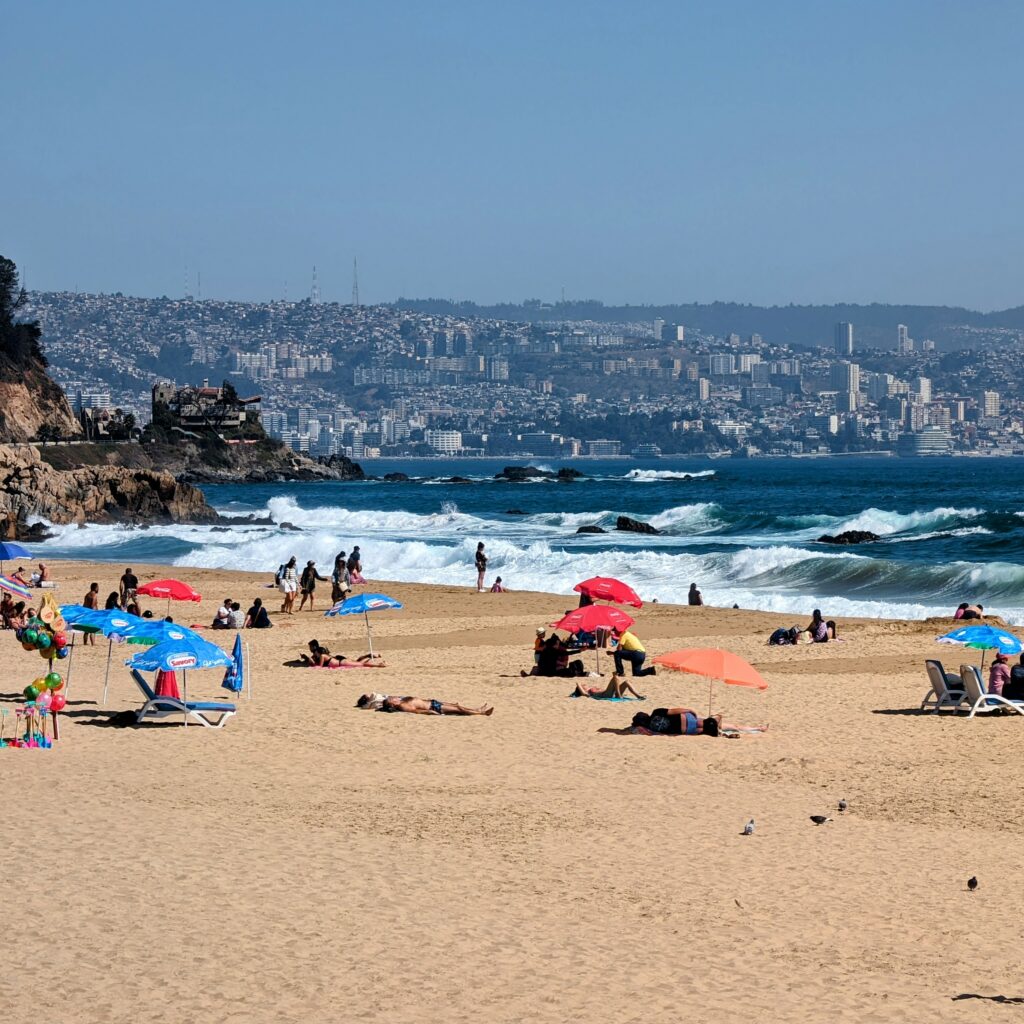
Day 4: Neighborhood and Park Exploration
This final day is all about exploring the smaller and more intimate parts of Santiago, Chile, including some of the quaint neighborhoods and parks throughout.
Barrio Paris- Londres
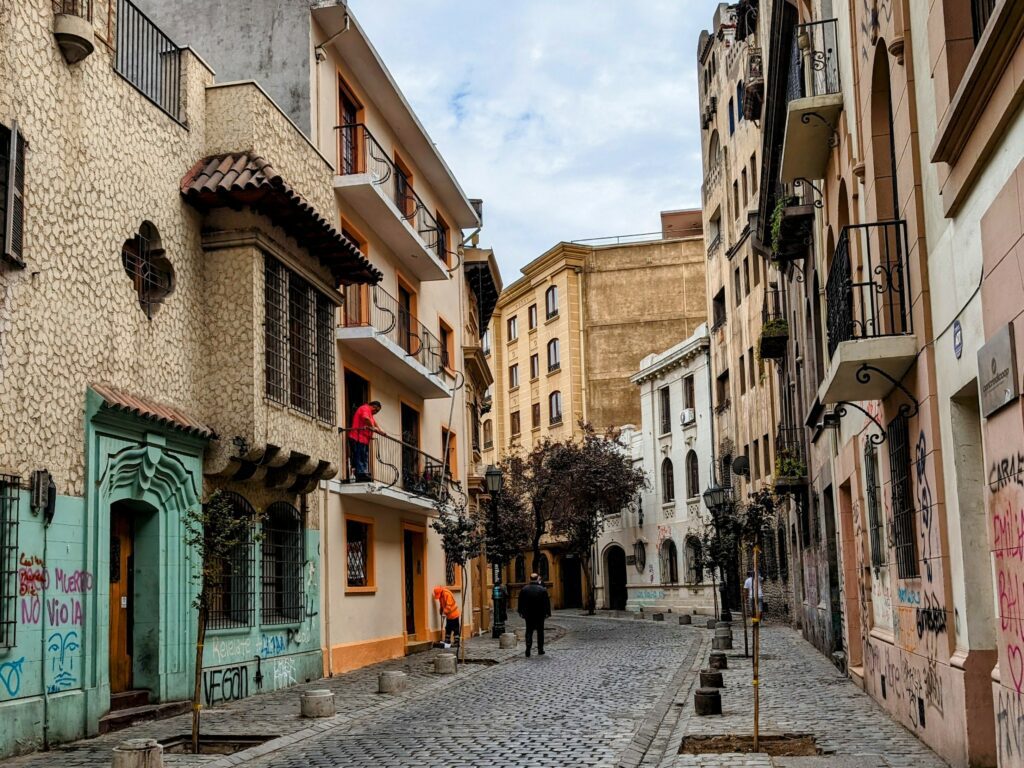
This lesser-known neighborhood is two streets (at the intersection of Paris and Londres) and is designed in the likeness of the Latin Quarter of Paris. It has cobblestone streets, restored mansions, and cafes. It’s a nice neighborhood to walk through to start your day.
Cerro Santa Lucia
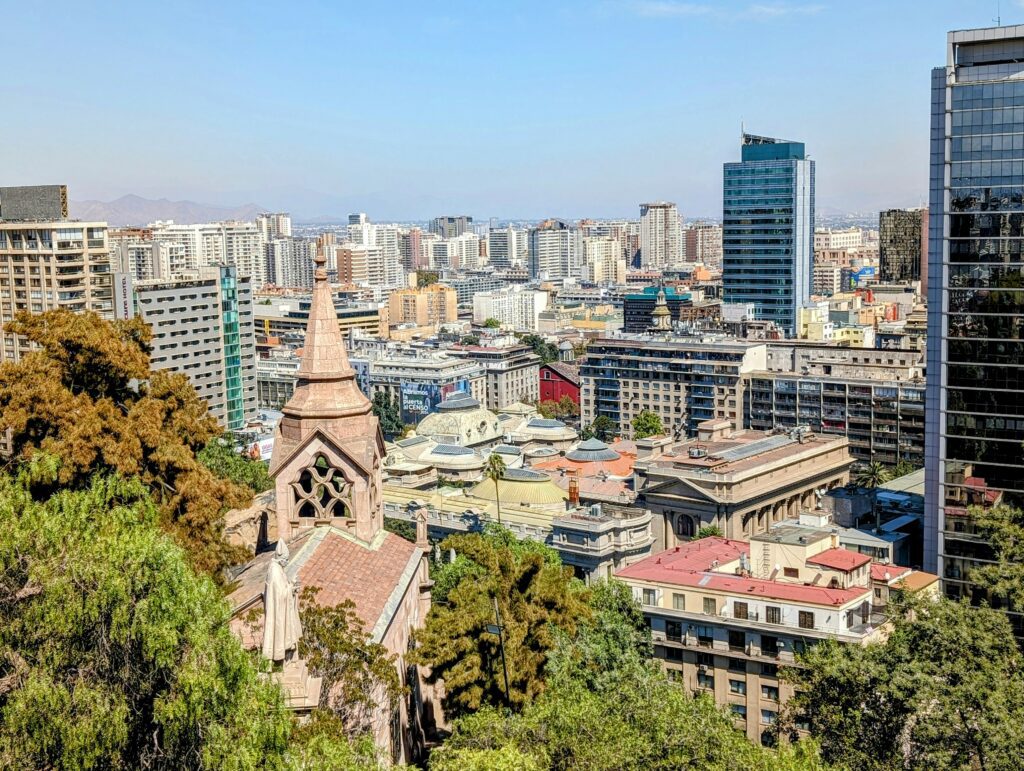
From Barrio Paris-Londres, you can walk a few blocks to the bottom of Cerro Santa Lucia, the large rock in the center of Santiago and an important location for the indigenous Mapuche of the region. It is free to climb to the top of the rock (you will just have to check in with the security guard at the entrance). Once you get to the very top, you will get great views of the city all around. It is a rewarding way to see the city.
Lastarria
After coming down from Cerro Santa Lucia on the north-side of the rock, you can walk right into the Lastarria neighborhood. Here, you can find a number of bars, restaurants, and art markets throughout the day. This was our favorite place to just walk around and people-watch. It’s also a nice place to purchase local artwork and souvenirs.
Bellavista
From Lastarria, cross the Parque Forestal to get to Bellavista. This colorful neighborhood is full of street art, restaurants, and boutiques. It is also the location of Pablo Neruda’s home and a museum of his work.
Parque Bicentenario
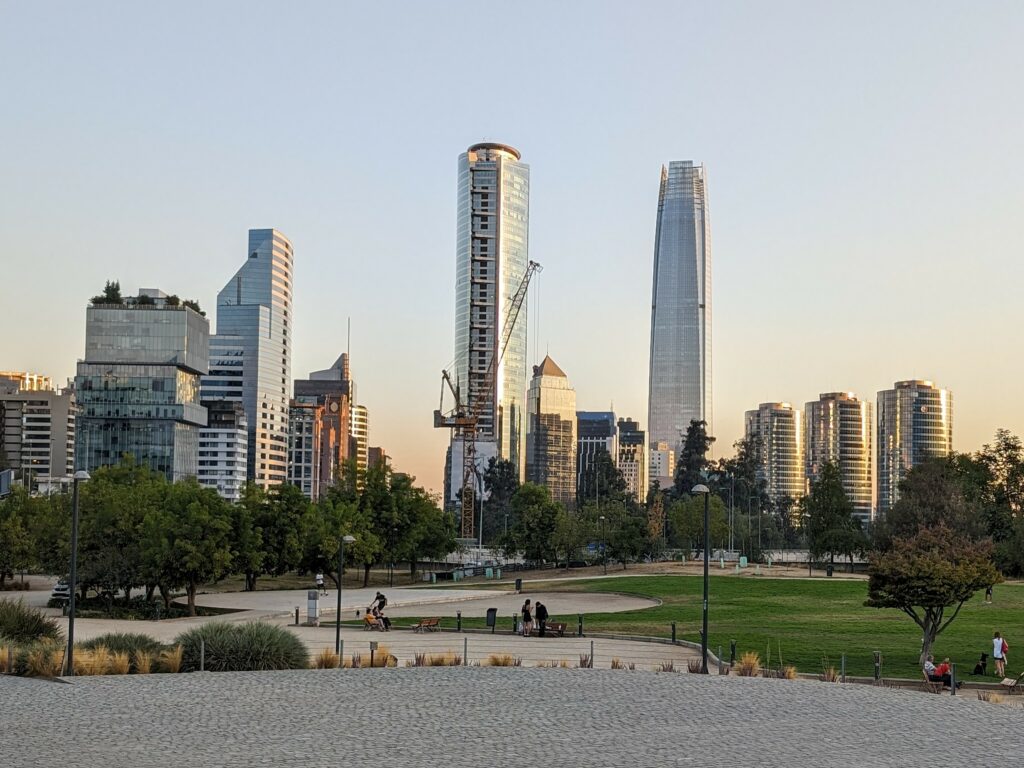
Finally, to end the day, take an Uber to Parque Bicentenario, one of the large parks in Santiago and a great place for a picnic. In the park, you can find some food stands with ice cream, coffee, and snacks. It’s a great place to relax and watch locals in the park!
Other Things to Do in Santiago, Chile
These activities were things that we did not have time to get to in Santiago, Chile but are other great things to do to continue to explore what Santiago has to offer.
Day Trips
- Vineyard tours – Santiago is very close to a main wine region in Chile and there are a number of tours that allow you to visit a number of vineyards in one day.
- Thermal baths – Santiago is near a volcanic region with different natural thermal baths in beautiful landscapes.
Activities in Santiago, Chile
- Templo Baha’i
- Chilean Museum of Pre-Columbian Art
- Mercado Central
- The General Cemetery
- Pablo Neruda’s home
Overall, enjoy your time in Santiago, Chile. There is plenty of art, culture, food, and drinks to explore throughout the city and its surrounding area.
How to Follow Our Travel:
We are actively posting on Instagram with more candid stories and updates about our travel.
If you want to get a weekly email of our latest blog postings, sign up below!
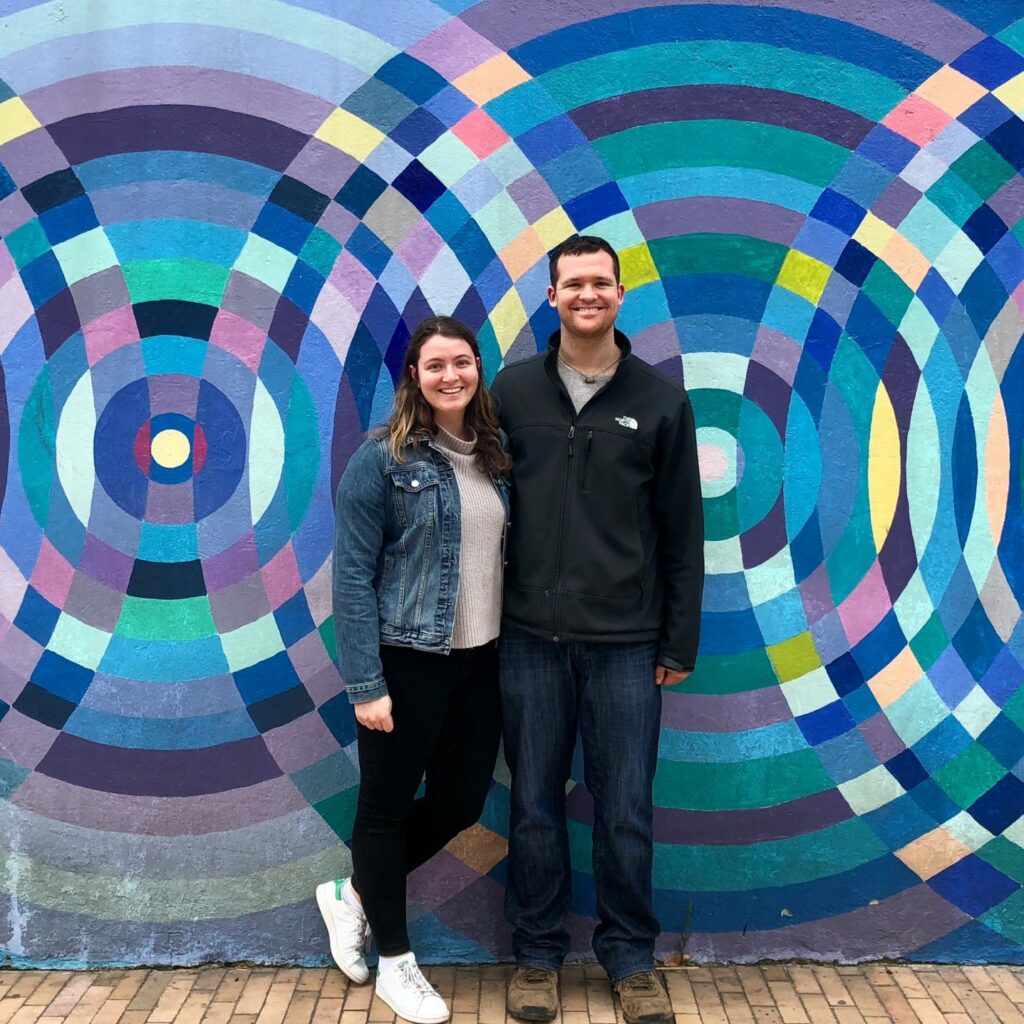
Hi! We Are Kevin and Melina!
We are Kevin and Melina, two avid travelers who have decided to take our hobby of traveling into our new lifestyle.
Follow along as we show you the highs and lows of planning, coordinating, and executing travel to help you make the most of every travel adventure.

